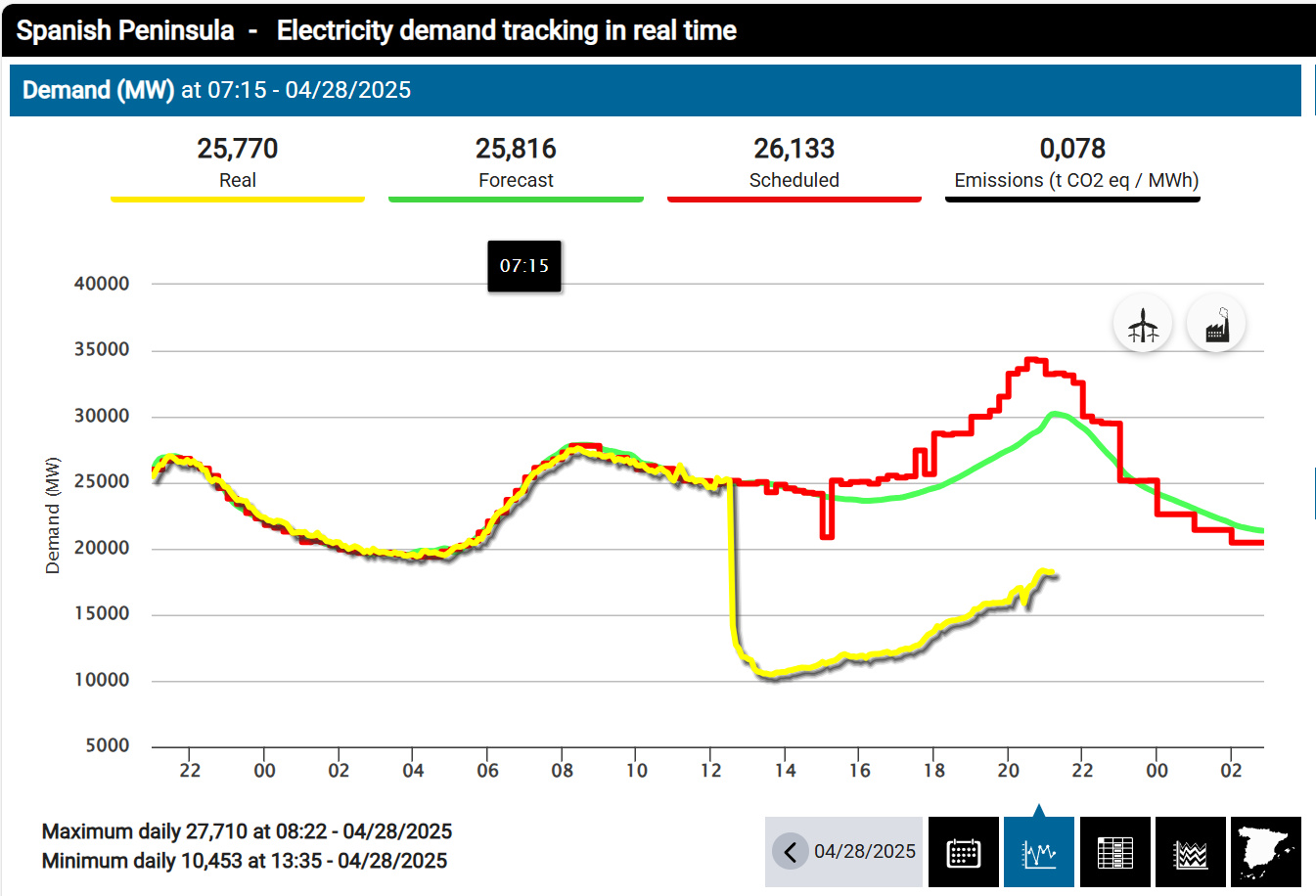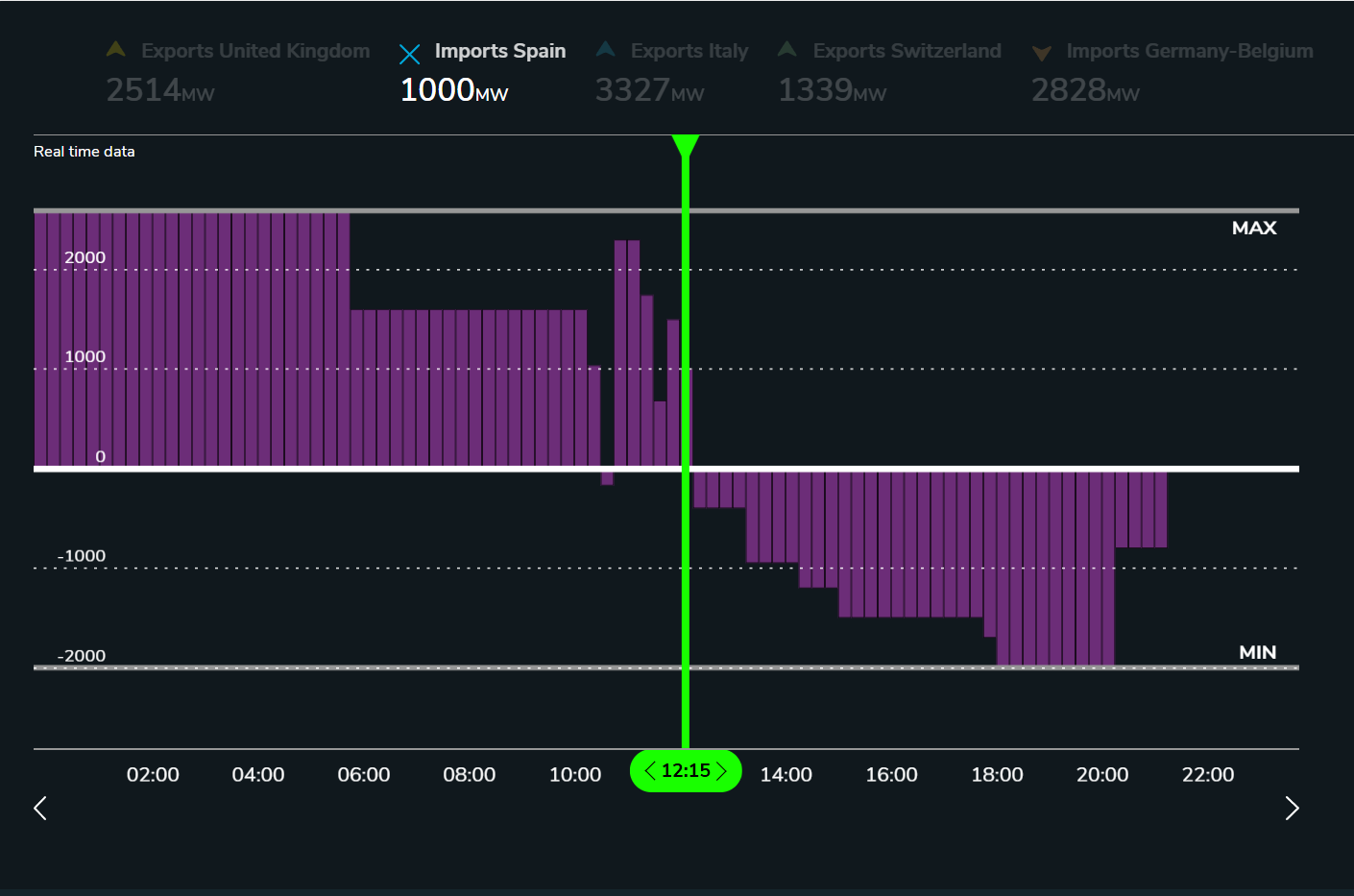Severe blackout paralyses Iberian peninsula - cause still unclear
A massive power outage hit large parts of Spain and Portugal on 28 April 2025, temporarily cutting off millions of people from the power supply. Major cities such as Madrid, Barcelona, Seville, Lisbon and Porto were also affected. According to the transmission system operators, the grid load collapsed drastically within seconds.
What happened?
At exactly 12:33 CEST, the frequency info service RJ2ET recorded a frequency dip to 49.843 Hz - a critical value that indicates a sudden and significant drop in power. Spain's Prime Minister Pedro Sánchez explained at a press conference called at short notice that the country had lost around 15 gigawatts - around 60 per cent of the power supply available at that time - in just five seconds. The exact cause is still unclear.
Portugal's transmission system operator REN cited extreme temperature fluctuations in the Spanish interior as a possible cause, which would have triggered so-called "induced atmospheric vibrations" on the 400 kV extra-high voltage lines. These unusual vibrations could have caused a chain reaction in the grid.
French reactor failure in connection?
The French authorities are also investigating whether an automatic shutdown of the Golfech 1 nuclear power plant (1.3 GW) in south-west France played a role. The reactor was shut down around ten minutes after the frequency dip at 12.40 pm. According to operator EDF, this was a safety measure with no impact on reactor safety. Whether the reactor failure was a consequence or a contributory cause of the grid disruption is still being investigated.

How did the emergency supply work?
France activated the first emergency exports to Spain from around 12:00 noon, which were increased to up to 240 MW over time. At the same time, border prices exploded to around 5,000 euros per megawatt hour. Gas-fired power plants and storage power plants were also ramped up within Spain in order to stabilise the basic supply.
Status of the restoration
By the early morning of 29 April, more than 99% of the power supply in Spain and Portugal had already been restored. According to experts such as Leonardo Meeus from the European University Institute, rebuilding a collapsed power system is technically highly complex. Special generators such as pumped-storage power plants are needed to bring the grid back up gradually and in a controlled manner.
Why was the grid so vulnerable?
The Iberian Peninsula is particularly vulnerable to frequency fluctuations as it has few electricity connections to the rest of Europe. Although there are projects to expand interconnectors, the international network remains weak. Spain and Portugal therefore have to secure their grid stability largely independently.
The high proportion of renewable, non-synchronous energy sources such as wind and solar energy makes this even more difficult. These generators stabilise the grid less effectively than traditional, rotating machine power plants. Experts are therefore calling for increased investment in grid stabilisers such as synchronous capacitors and battery storage systems - technologies that are already being used successfully in the UK, for example.


